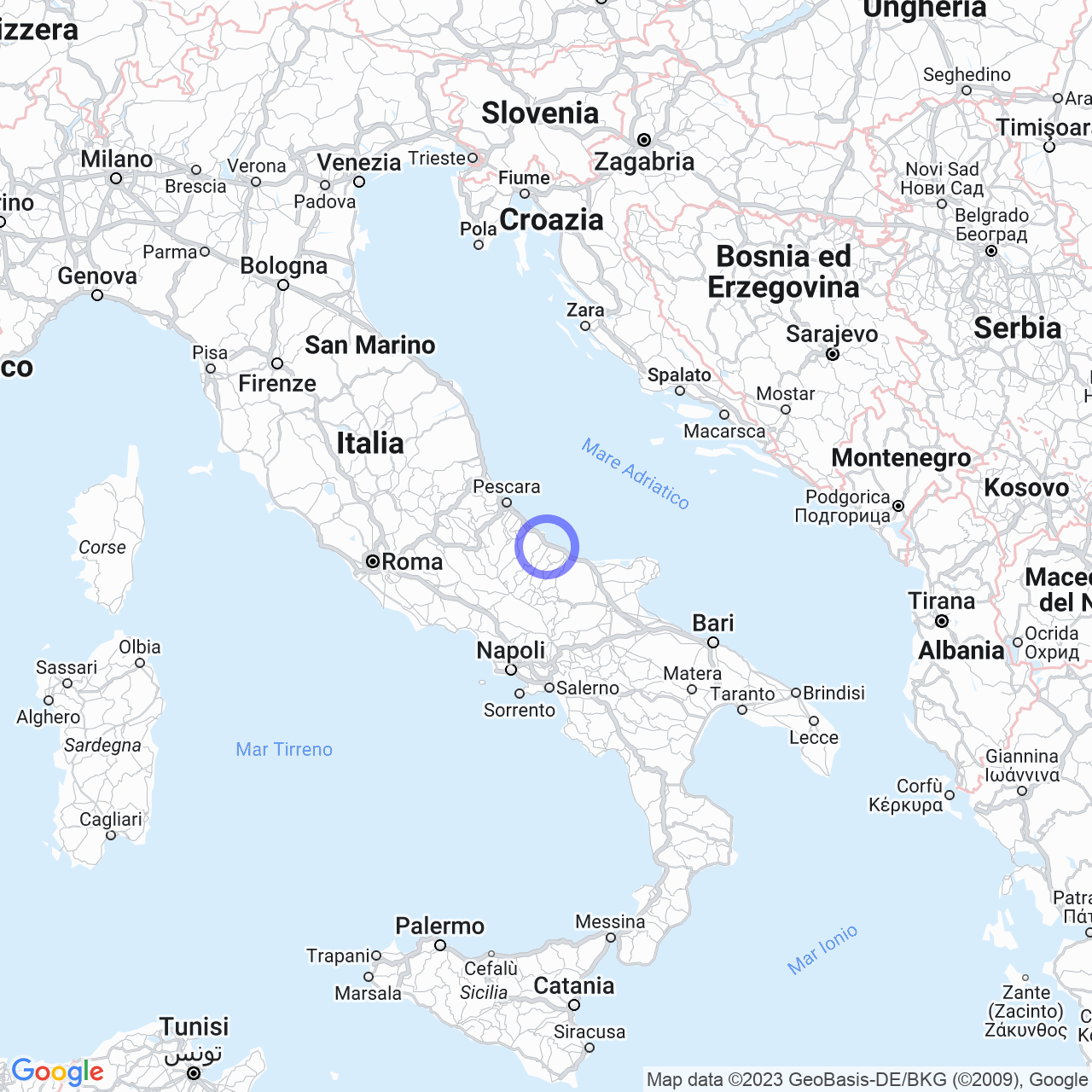San Salvo
Welcome to San Salvo!
Hello everyone! Today we will talk about San Salvo, a municipality in the province of Chieti in Abruzzo, located near the beautiful coast of the Adriatic Sea.
Discover the geography of San Salvo
The municipality of San Salvo is bordered to the north by the Buonanotte valley and to the east by the Adriatic Sea. It borders the municipalities of Cupello, Vasto and Montenero di Bisaccia. The city is located on a hilly area at 128 meters above sea level, and its coast extends for 3 kilometers of beach. Can you imagine the breathtaking views that can be admired from these places?

Origins of the Name and Ancient History
The name "San Salvo" is curious, isn't it? We reveal the mystery: it comes from the first documents that mention the "monasterium Sancti Salvi", or the ancient abbey located near the Trigno river, from which the "Quadrilatero" historical center developed. Despite the abbey falling into disrepair in the seventeenth century and being renamed the parish of San Giuseppe, the historic name of the San Salvo fief has remained to this day.
The ancient history of San Salvo dates back to prehistoric times, as evidenced by discoveries made in the Trigno area and in San Vitale square. Among the discoveries from the Roman Empire era, there are floors with mosaics and marble, tombs from different epochs and the remains of an aqueduct. The town of that time was much larger than the medieval settlement that developed between the eleventh and twelfth centuries thanks to the influence of the Benedictine Order. The current Corso Garibaldi seems to follow the Roman decumanus path.
The Rebirth of San Salvo with the Abbey of Saints Vito and Salvo
The rebirth of San Salvo takes place with the foundation of the Cistercian cenobium of San Salvo del Trigno, between the ninth and eleventh centuries, on top of the Roman settlement of Cluvia. The Benedictine cenobium will later come into possession of the Cistercian monks from the thirteenth century. San Salvo becomes an important possession area of two important abbeys of the time, that of Montecassino and San Vincenzo al Volturno. The ancient Cluvia, on the other hand, in the San Rocco district, was owned by the monastery of Sant'Angelo in Salavento. The monastery of San Salvo became important around the twelfth century, around which a medieval settlement, the ancient San Salvo, was built.
Let's Explore San Salvo
Now we know more about San Salvo, but what can we find and visit? First of all, its historic center, the so-called Quadrilatero, which arises around the former monastery and extends for about 30,000 square meters. One of the main buildings in the Quadrilatero is the church of Santa Maria della Mercede, built in 1464 in Gothic style, with an interior rich in decorations and frescoes. The Municipality, dating back to the end of the nineteenth century, is another building worth visiting. Among the streets of the city, we also find the Palazzo de Sterlich, owned by the noble family of the same name.
But San Salvo is not just history. The coast, which extends for 3 km, offers numerous beaches and places to taste excellent Abruzzese specialties based on fish. The beach of San Salvo Marina, with its golden sand and crystal clear sea, is among the most popular, as well as Punta Aderci, with a protected natural area, offering breathtaking views of the Adriatic Sea.
Conclusion
In summary, if you are looking for a place where you can enjoy history, culture, sea and good food, San Salvo is the right destination for you! The city and its surrounding area offer numerous activities and places to visit, not to mention the warm welcome of its inhabitants. Come and visit us and let yourself be conquered by our territory!
